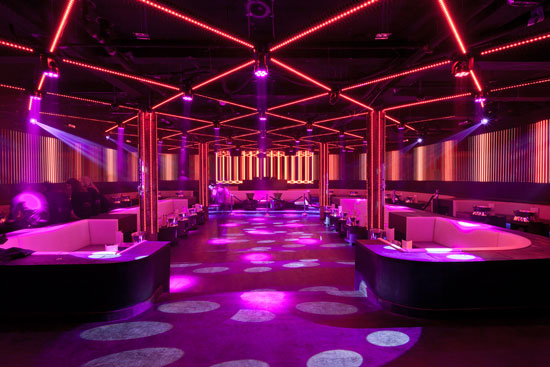The Revolutionary Strength for Illumination at Enhancing Movement Floor Beauty
Wiki Article
Illumination plays a critical role in creating the ambiance of a dance floor. It can change a simple space into an thrilling setting that improves the overall experience for performers and spectators alike. The correct lighting can influence the vibe, energy, and even the form of the performance being performed. By using multiple types of lighting, such as focused lights, colored lights, and flashing lights, event organizers can establish a dynamic setting that enthralls the audience and invites participation.

One of the key functions of lighting on a dancing area is to showcase the dancers. Focused lights can be used to direct attention on solo dancers or teams, making them the focal point of attention. This method not only displays their actions but also adds a dimension of theatricality to the show. When dancers are illuminated properly, their facial expressions and skills become more apparent, allowing the spectators to value their abilities. This targeted lighting can also help to establish a narrative, guiding the audience through the performance.
In addition to highlighting performers, colored illumination can significantly impact the mood of the dance floor. Various colors elicit varied feelings; for example, warm colors like crimson and orange can generate a sense of enthusiasm and vitality, while cooler colors like azure and emerald can promote calmness and relaxation. By strategically using colored illumination, organizers can control the environment to match the concept of the occasion or the type of the performance. This thoughtful approach to lighting design can enhance the overall encounter for everyone involved.
Strobe lights and other dynamic lighting effects can also add excitement to a dance floor. These features can generate a sense of beat and movement that complements the music being played. When timed with the rhythm, strobe lights can make the dancing area feel alive, encouraging dancers to move in sync with the pulsing lights. This connection between light and music can elevate the energy of the occasion, making it more pleasurable for both dancers and audience. The use of such effects requires careful planning to ensure they improve rather than distract from the show.
Ultimately, the overall design of the lighting arrangement is crucial for establishing a cohesive aesthetic on the dance floor. A carefully planned lighting strategy takes into account the layout of the space, the type of performance being performed, and the audience's encounter. By combining various lighting techniques, such as ambient lighting, accent lighting, and unique features, planners can create dance floor decoration for family reunions a visually impressive setting. This focus to detail not only enhances the show but also creates a lasting impression on the spectators, making the occasion memorable. In conclusion, the powerful influence of lighting is vital in enhancing dancing area aesthetics, creating an captivating and pleasurable experience for all.